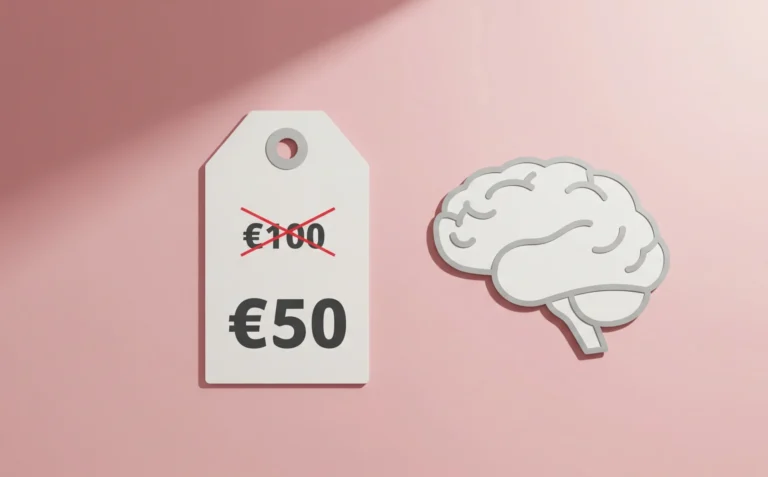The Fiverr Buyer’s Playbook: Win More Orders in 2025
You’ve built your Fiverr gig. You’ve polished your portfolio, set your prices, and now you’re waiting for the orders to roll in. But sometimes, the silence can be deafening. You see other sellers with packed queues and wonder, “What do they know that I don’t?”
The answer often lies in a simple but profound shift in perspective: Stop thinking like a seller and start thinking like a buyer.
Buyers on Fiverr aren’t just looking for a service; they’re looking for a solution to a problem, a reliable partner, and a seamless experience. They’re navigating a sea of options, and their decision-making process is a complex mix of logic, emotion, and risk assessment.
This guide is your deep dive into that process. We’ll go beyond the surface-level advice and unpack the core psychology of the Fiverr buyer. By understanding what truly drives their clicks, messages, and orders, you can transform your gig from just another option into their only choice.
1. Master the First Impression: Your Gig as a Digital Handshake
Before a buyer ever reads your description or sends a message, they make a snap judgment based on your gig’s “curb appeal.” This first impression is everything. In a crowded marketplace, you have about three seconds to convince a buyer to click instead of scrolling past.
Your Gig Title and Thumbnail Are Your Billboard
Think of your gig title and thumbnail as a billboard on a busy highway. It needs to be clear, compelling, and instantly communicate value.
- Weak Title: “I will do graphic design.”
- Strong Title: “I will design a modern, minimalist logo for your business.”
The second title is specific, uses powerful adjectives (“modern,” “minimalist”), and speaks directly to a business need. It tells the buyer exactly what problem you solve.
Your thumbnail is equally critical. Avoid generic stock photos or cluttered designs. A clean, professional image of your best work—or even a high-quality photo of yourself—builds immediate trust. If you’re a logo designer, show a stunning logo. If you’re a writer, use clean typography to state your main value proposition.
Curate a Problem-Solving Showcase, Not Just a Portfolio
Many sellers make the mistake of dumping all their past work into their portfolio. A top-tier seller curates it. A buyer doesn’t want to see 50 random projects; they want to see that you’ve solved a problem like theirs before.
Structure your portfolio with intent. Group similar projects together. Use the description space for each image to create a mini-case study:
- What was the client’s problem? (e.g., “A startup needed a brand identity to attract venture capital.”)
- What was your solution? (e.g., “I developed a logo and brand guide focused on trust and innovation.”)
- What was the result? (e.g., “The client successfully secured their first round of funding.”)
This narrative approach transforms your portfolio from a gallery into a collection of success stories, positioning you as a strategic partner.
2. Engineer Trust Before the First Message
Trust is the currency of online freelancing. High-value buyers are inherently risk-averse. They’re spending real money and need assurance that you can deliver. You can build this trust long before you exchange a single word.
Leverage Video: The Unspoken Trust Builder
A gig video is arguably the most underutilized trust-building tool on Fiverr. It allows you to speak directly to your potential buyer, putting a face and a personality to the gig. You’re no longer just a username and a profile picture; you’re a real person.
Your video doesn’t need to be a Hollywood production. A simple, well-lit video filmed on your smartphone is enough. Introduce yourself, clearly state the problem you solve, explain your process, and end with a confident call to action. Speaking with passion and expertise about your craft is incredibly convincing.
Use FAQs to Overcome Objections Proactively
The FAQ section of your gig is prime real estate for building confidence. Don’t waste it on generic questions. Think about the hidden fears and objections a buyer might have, and address them head-on.
- Instead of: “Do you offer revisions?”
- Try: “What does your revision process look like?”
- Answer: “Your satisfaction is my priority. Every order includes two free rounds of revisions. We’ll start with my initial concept, you’ll provide feedback, and I’ll refine it. This collaborative process ensures the final result is exactly what you envisioned.”
By answering these questions preemptively, you show that you understand the buyer’s concerns and have a professional process in place to handle them.
3. The Art of Communication: From Order Taker to Consultant
Once a buyer decides to message you, the game changes. Your communication skills are now under the microscope. This is where top sellers separate themselves from the pack.
Your First Reply Sets the Tone
Speed matters, but quality matters more. A fast, generic reply like “Yes, I can do it. Please order,” is a red flag for a discerning buyer. It signals that you haven’t truly read or understood their request.
Your first reply should be a “consultant’s response”:
- Acknowledge: Thank them for reaching out and show you’ve read their message carefully. (“Thanks for sending over the details for your social media project.”)
- Clarify: Ask one or two insightful questions to demonstrate your expertise and ensure you fully understand the scope. (“The goal of increasing engagement is clear. To best help you, could you tell me a bit about your target audience’s demographics?”)
- Reassure: Briefly state your confidence in delivering a great result. (“This aligns perfectly with my experience in creating content for tech startups. I’m confident we can achieve your goals.”)
- Guide: Tell them the next step. (“If that sounds good, I can put together a custom offer that outlines the full scope and timeline.”)
This approach immediately repositions you from a simple service provider to a valuable consultant.
The Power of the Custom Offer
Never underestimate the power of a well-crafted custom offer. It’s your official proposal. Instead of just entering a price and delivery time, use the description box to summarize your understanding of the project and reiterate the value you’re providing.
- Example: “As discussed, this offer is for a complete 5-page website design for ‘The Cozy Corner Cafe.’ It includes a homepage, about page, menu, contact, and gallery, all optimized for mobile. I will focus on creating a warm, inviting user experience to drive more reservations, with delivery including all source files.”
This shows professionalism and ensures both you and the buyer are perfectly aligned on the deliverables.
4. Cultivate a Reputation That Sells For You
Your track record is your most powerful marketing asset. Every completed order is an opportunity to build a reputation that attracts new, better buyers.
Encourage Reviews That Tell a Story
A simple “Great work!” review is nice. A review that tells a story is gold. When a project is wrapping up, and you know the client is happy, don’t be afraid to guide them.
You could say: “I’m so glad you’re thrilled with the new logo! When you have a moment to leave a review, future buyers find it really helpful to hear about the process and the impact the new design has had on your business.”
This gentle nudge encourages them to leave a more substantial review that speaks to your communication, process, and results—the exact things new buyers are looking for. Capitalizing on Fiverr’s “highlight review” feature is a must; pin the review that best sells your service.
Ultimately, understanding the buyer’s journey is about empathy. It’s about seeing your services through their eyes—their hopes, their deadlines, and their risks. By optimizing your gig for their first impression, engineering trust before they even contact you, communicating like a consultant, and building a stellar reputation, you create a system that doesn’t just win you orders. It wins you a thriving, high-value freelance business.


